15 Radish Companion Plants You Should Know Before Planting
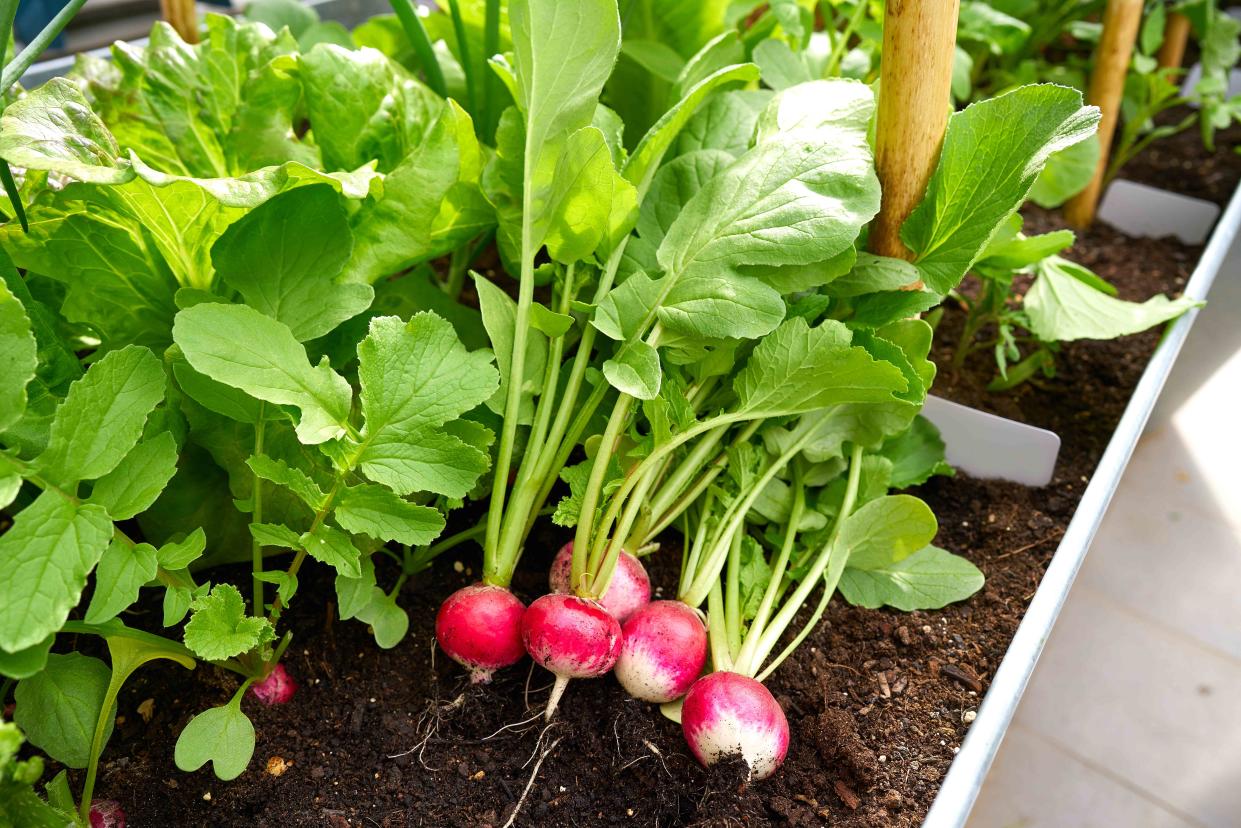
LUNAMARINA / Getty Images
Radishes (Raphanus sativus) are quick and easy to grow from seed. Depending on the variety, these crunch root vegetables take anywhere between 22 and 60 days to grow.
If you're planning to grow radishes in your garden, consider incorporating some companion plants. In a vegetable garden, companion planting is an efficient way to use space. When done properly, companion planting can assist in pollination, provide natural pest control, improve overall soil health, and suppress weeds.
What Is Companion Planting?
Companion planting is the strategic planting of a crop with another crop to gain a mutual advantage in production, flavor, or protection from pests.
Learn which herbs, flowers, and vegetables make the best radish companion plants.
15 Best Radish Companion Plants
Chervil
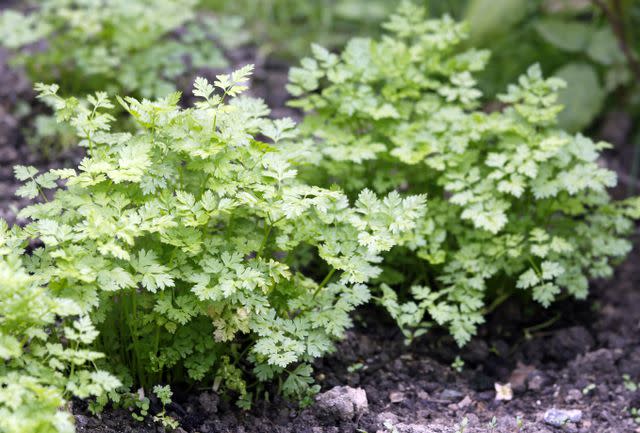
Christophe LEHENAFF / Getty Images
Chervil, also known as French parsley, is one of the best radish companion plants to have in your garden. In addition to repelling pests, this aromatic herb improves the texture and taste of radishes.
Name: Chervil, French parsley, garden chervil (Anthriscus cerefolium)
USDA Hardiness Zones: 7-9
Light: Full sun, partial shade
Soil: Loamy, sandy, well-drained
Chives
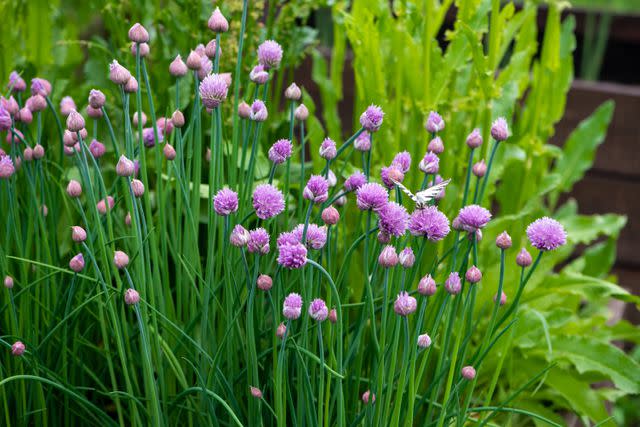
Svetlana Monyakova / Getty Images
Alliums like chives are a go-to companion plant for organic pest control. Their purple flowers attract bees and other pollinators while their pronounced onion-y aroma deter Japanese beetles and other damaging insects. Chives and radishes are also delicious when eaten together, so harvest them at the same time.
Name: Chives (Allium schoenoprasum)
USDA Hardiness Zones: 3-9
Light: Full sun, light shade
Soil: Loamy, sandy
Leeks
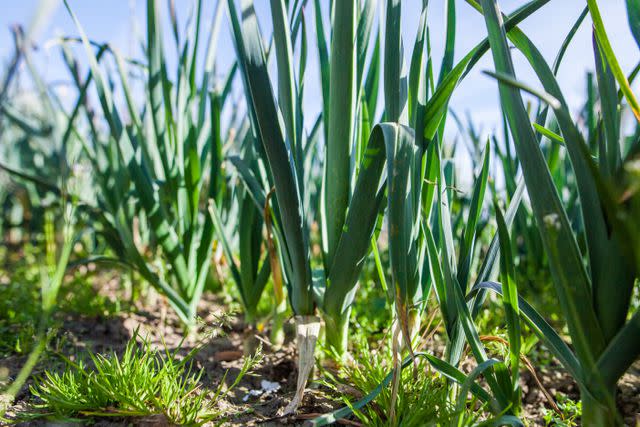
Capelle.r / Getty Images
Leeks are another allium that makes a great radish companion plant. Plant leeks to protect radishes and other vegetables from aphids, slugs, cabbage worms, and other predator insects.
Name: Leek (Allium ampeloprasum)
USDA Hardiness Zones: 5-9
Light: Full sun
Soil: Loamy, well-drained
Lettuce
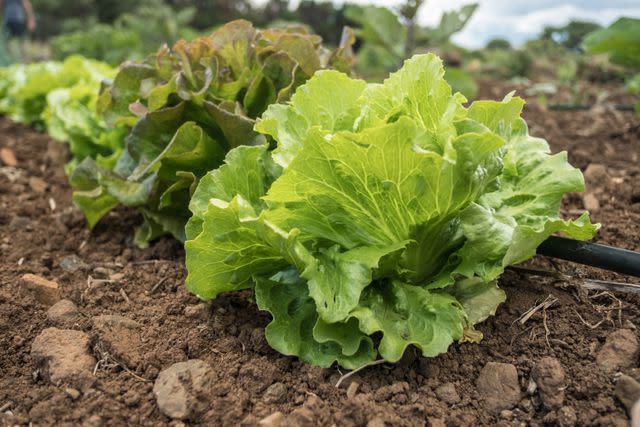
Mathia Coco / Getty Images
When planted together with lettuces, radishes tend to be more tender and juicy. Radishes help break up compacted soil, creating the loose soil environment that lettuce thrives in.
Name: Lettuce, garden lettuce (Lactuca sativa)
USDA Hardiness Zones: 2-11
Light: Full sun, partial sun
Soil: Loamy, rich, well-drained
Peas
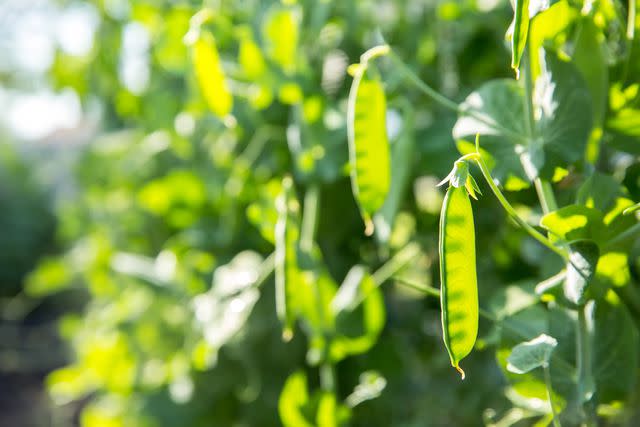
emholk / Getty Images
Peas are a great companion plant for radishes. They add nitrogen to the soil, which helps the root vegetable thrive. Because they are climbing plants, peas don't compete for the same space. And like radishes, peas can be planted as soon as the soil is workable.
Name: Pea, garden pea (Pisum sativum)
USDA Hardiness Zones: 2-11
Light: Full sun, partial sun
Soil: Moist, well-drained
Dill
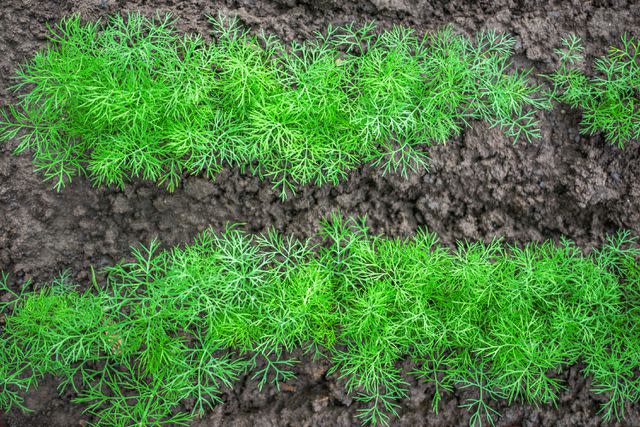
Oxana Medvedeva / Getty Images
Dill is a useful herb to plant, as it attracts beneficial insects such as ladybugs, bees, butterflies, and parasitic wasps to your garden. Radishes and dill thrive in the same temperatures and environment.
Name: Dill (Anethum graveolens)
USDA Hardiness Zones: 2-11
Light: Full sun
Soil: Rich, well-drained
Mint
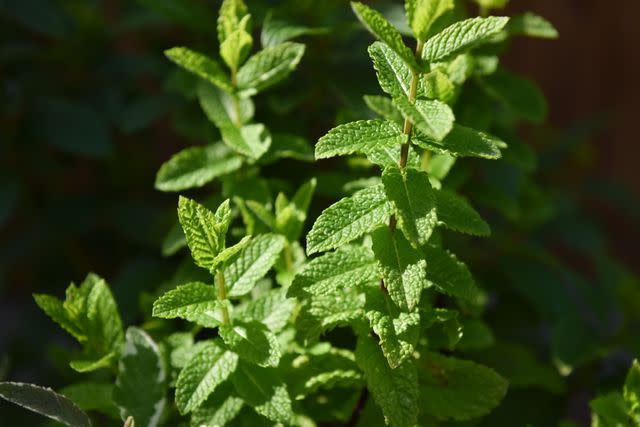
John Keeble / Getty Images
The many types of mint all have one thing in common: they are great at repelling flies, fleas, and spiders in the garden. When planted near radishes, mint can also help deter grazing animals like deer.
Name: Mint (Mentha spp.)
USDA Hardiness Zones: 3-11
Light: Full sun, partial sun
Soil: Loamy, moist, well-drained
Oregano
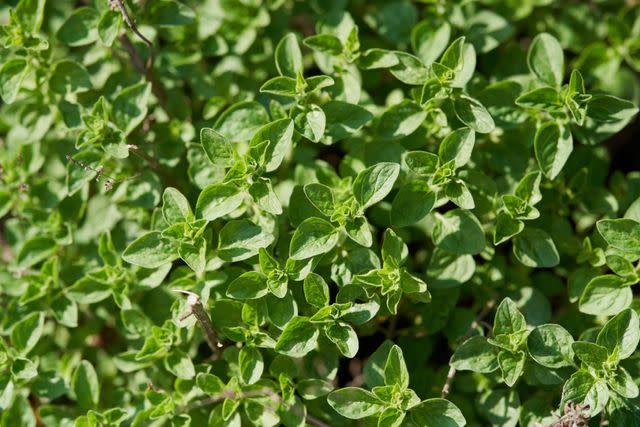
annick vanderschelden photography / Getty Images
Radishes grow very well beside perennial herbs like oregano, which attracts ladybugs to the garden. Oregano's powerful aroma helps repel cabbage moths, which feast on radishes and other Brassica species such as cabbage and broccoli.
Name: Oregano (Origanum spp.)
USDA Hardiness Zones: 4-10
Light: Full sun
Soil: Well-drained
Spinach
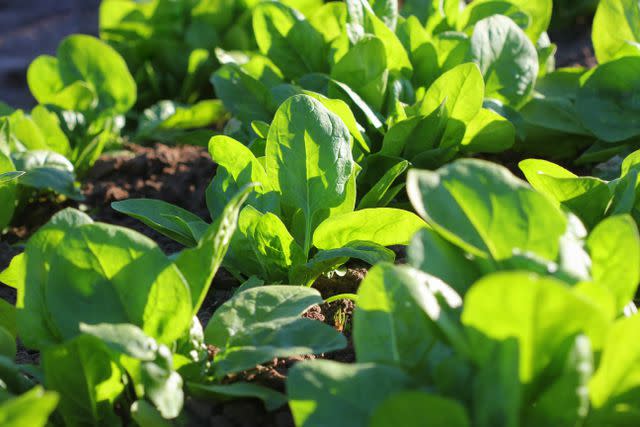
Vaivirga / Getty Images
Both radishes and spinach can be grown in the cooler temperatures of spring and autumn, and work well when interplanted. As radish bulbs grow, they help break up tough soil, making room for spinach roots to grow. Most pests prefer to munch on radish greens, luring them away from the delicate spinach leaves.
Name: Spinach (Spinacia oleracea)
USDA Hardiness Zones: 2-11
Light: Full sun, partial sun
Soil: Loamy, moist, well-drained
Common Beans
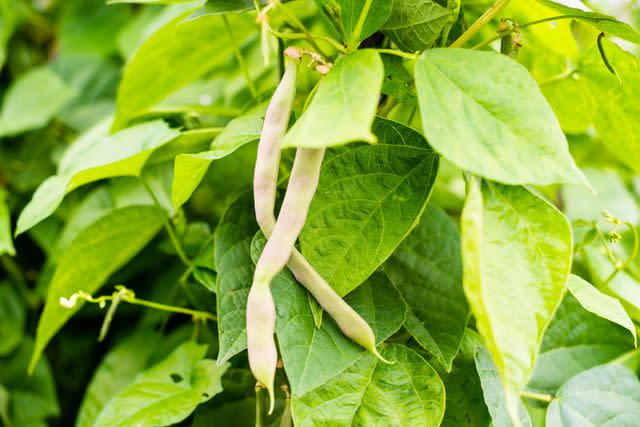
rootstocks / Getty Images
Beans and other legumes grow well with most herbs and vegetables. Beans fix nitrogen in the soil, providing radishes and other nearby plants with an essential nutrient. And because beans tend to bush or climb, they don't compete with radishes for the same soil space.
Name: Common bean, green bean, snap bean, string bean, French bean (Phaseolus vulgaris)
USDA Hardiness Zones: 2-11
Light: Full sun
Soil: Loamy, moist, well-drained
Nasturtium
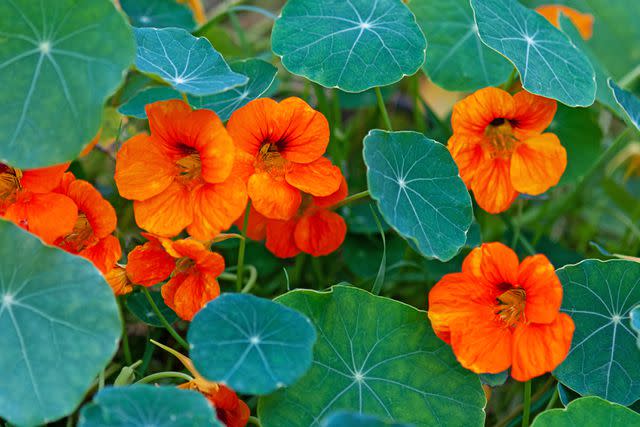
Nadya So / Getty Images
Nasturtiums, a type of edible flower, attract aphids. While it might seem counterintuitive to introduce a plant that attracts pests, having nasturtium in your garden will lure the insects to the flower and away from your other crops, including radishes.
Name: Nasturtium (Tropaeolum spp.)
USDA Hardiness Zones: 9-11
Light: Full sun
Soil: Moist, well-drained
Cucumbers
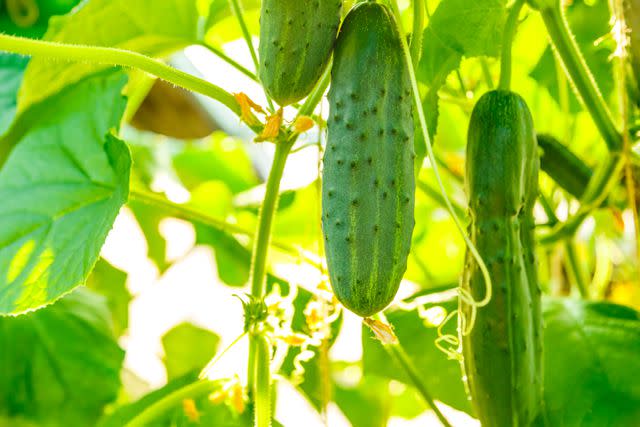
Garsya / Getty Images
Radishes help to repel cucumber beetles, which feed on the leaves of cucumber plants. Cucumbers also work well with radishes because they don't compete for space; radishes grow beneath the soil whereas cucumbers grow above ground.
Name: Cucumber (Cucumis sativus)
USDA Hardiness Zones: 2-11
Light: Full sun
Soil: Moist, well-drained
Carrots
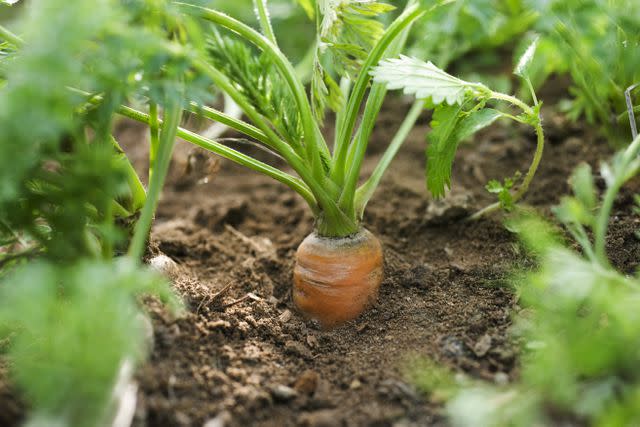
PhotoAlto/Laurence Mouton / Getty Images
Radishes, a fast-growing root vegetable that germinate quickly, help break up the soil to help slow-germinating carrots form better.
Name: Carrot (Daucus carota)
USDA Hardiness Zones: 3-10
Light: Full sun to part shade
Soil: Loose, well-drained
Marigolds
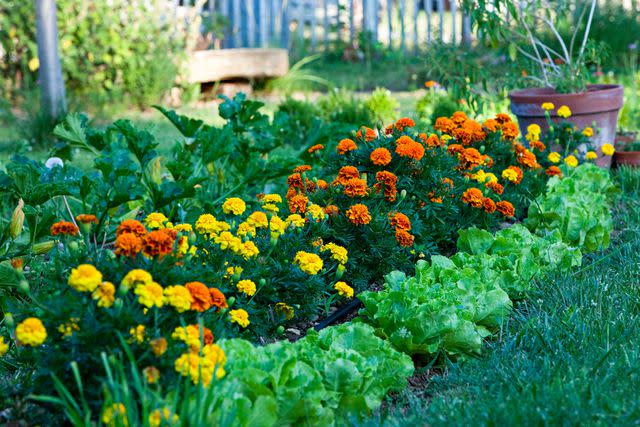
Philippe S. Giraud / Getty Images
Marigolds are one of the most popular companion plants for vegetables, including radishes. They are low-maintenance, attract pollinators, and deter unwanted insects.
Name: Marigold (Tagetes spp.)
USDA Hardiness Zones: 2-11
Light: Full sun
Soil: Moist, well-drained
Calendula
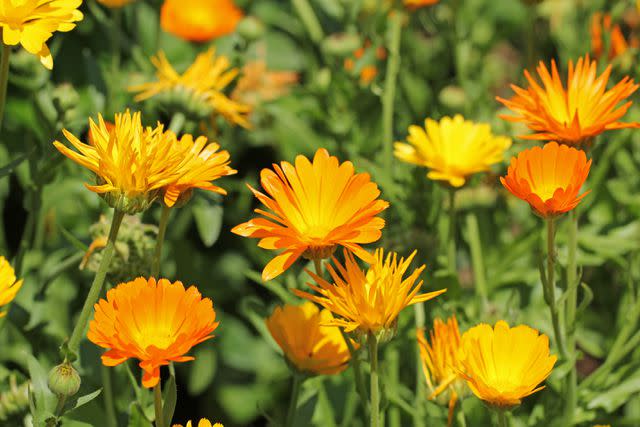
BasieB / Getty Images
When planted near radishes, calendula will act as a trap crop and keep aphids and other pests off radish leaves.
Name: Calendula, common marigold, pot marigold (Calendula officinalis)
USDA Hardiness Zones: 2-11
Light: Full sun, partial sun
Soil: Well-drained
What Not to Plant With Radishes
Radishes are members of the Brassicaceae family. They could have a difficult time germinating and growing near other brassicas, so avoid planting radishes near broccoli, cabbage, cauliflower, turnip, and mustard.
Avoid hyssop, a flowering plant that attracts many pollinators and beneficial insects, as it inhibits the growth of radishes.
Planting radishes near potatoes should also be avoided, as they have different soil requirements and will not thrive together.
Read Next: 21 Best (and 7 Worst) Companion Plants for Tomatoes
Read the original article on The Spruce.
